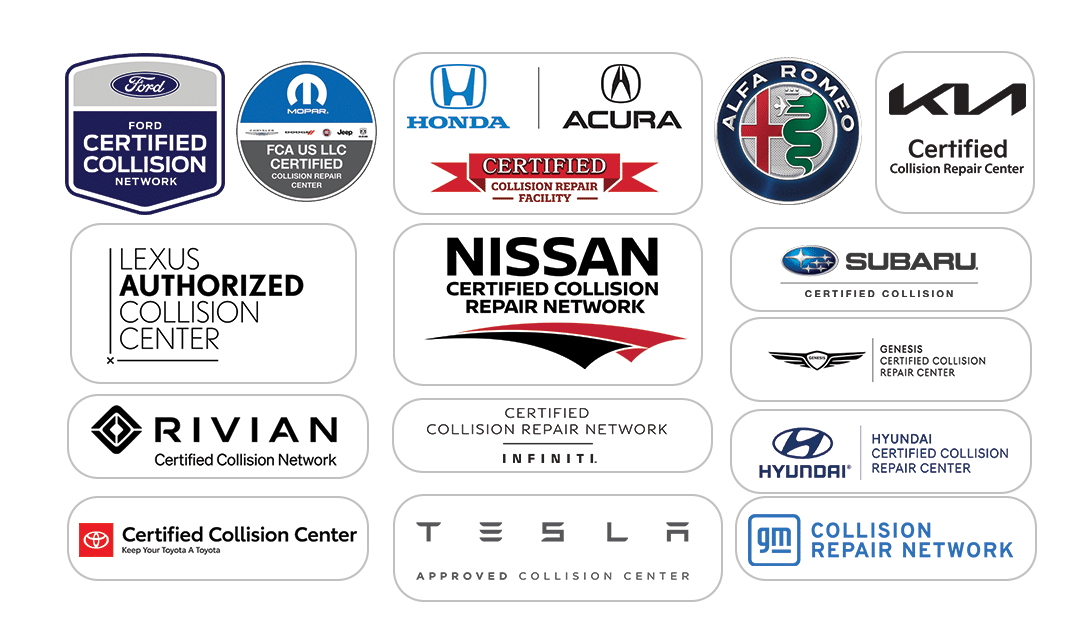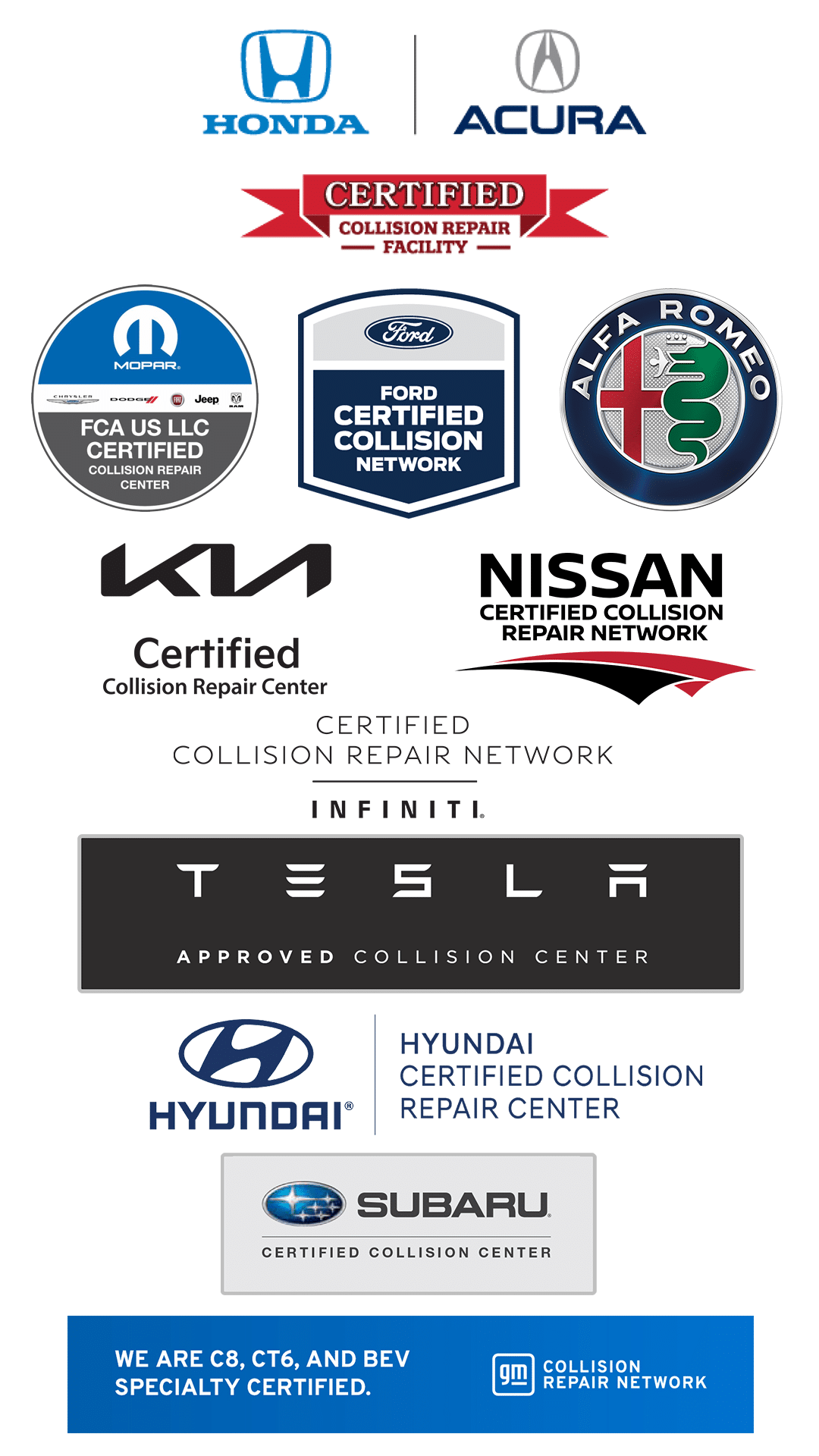

Certified For Your Peace Of Mind
If you’re like most consumers, then your vehicle is a huge investment relative to your income. Similarly, the investment repair shops must make to become and stay certified is very substantial. Having the proper equipment, internal infrastructure, and up-to-date training for technicians can cost certified repair shops tens or even hundreds of thousands of dollars, but what this investment should be saying to the consumer is that your safety is our number one priority.
Choosing a certified collision repair facility assures that the repair shop is adhering to the strict standards set in place by each manufacturer, and that they will perform safe, complete and quality repairs. According to the California Bureau of Automotive Repair, 60 percent of reinspected vehicles were found to have mistakes. Mistakes like this made by body shops that contradict industry standards are putting an alarming rate of unsuspecting people in potentially life-threatening situations. In today’s fast-changing automotive industry selecting a certified repair shop like Dalton Collision is more critical than ever.
What Does “Certified” Mean?
So a collision repair facility has told you that they’re OEM certified. What does that mean?
First of all, certified collision repair networks are offered by many of the vehicle automobile manufacturers. These networks typically involve an agreement between the repair facility and the OEM vehicle manufacturer.
Now understand that in order for a collision repair facility, to become OEM certified or OEM approved or accredited, they must go through a lot of training, and they must also purchase the right equipment to fix your vehicle.
It’s also important to understand that just because there is a dealership that sells a specific brand of vehicles does not automatically mean that they are certified or approved by the vehicle manufacturer when it comes to collision repair. As a matter of fact, a lot of your independent repair facilities are actually in fact certified by the vehicle manufacturer.
Now, again, what does a shop have to do to get certified, approved, or recognized by these OEM manufacturers?
Again, it boils down to really two different things, training and equipment. The training could be anything from how to properly identify some of the damage that can occur to a vehicle when it’s an accident. It could be training to learn how to identify and inspect to ensure that the safety systems are working properly.
We always want to make sure that the vehicle is brought back to factory specification using the approved equipment that the manufacturer has required us to use. And there are gonna be times that there’s gonna be some repair operations that we can’t do in the body shop And we would work with the actual service center of the manufacturer, and that would be at the local dealership. So, again, we have a relationship with the, service, department We work with the parts department to ensure that we’re using the correct, parts for your vehicle. And lastly, if you’re wondering where to verify that you, that collision shop is on the approved network list, You can go to the manufacturer’s website and type in the ZIP code, and it’ll ensure that that shop is located on there. And if not, that means they’re not a direct, network shop for the manufacturer.
